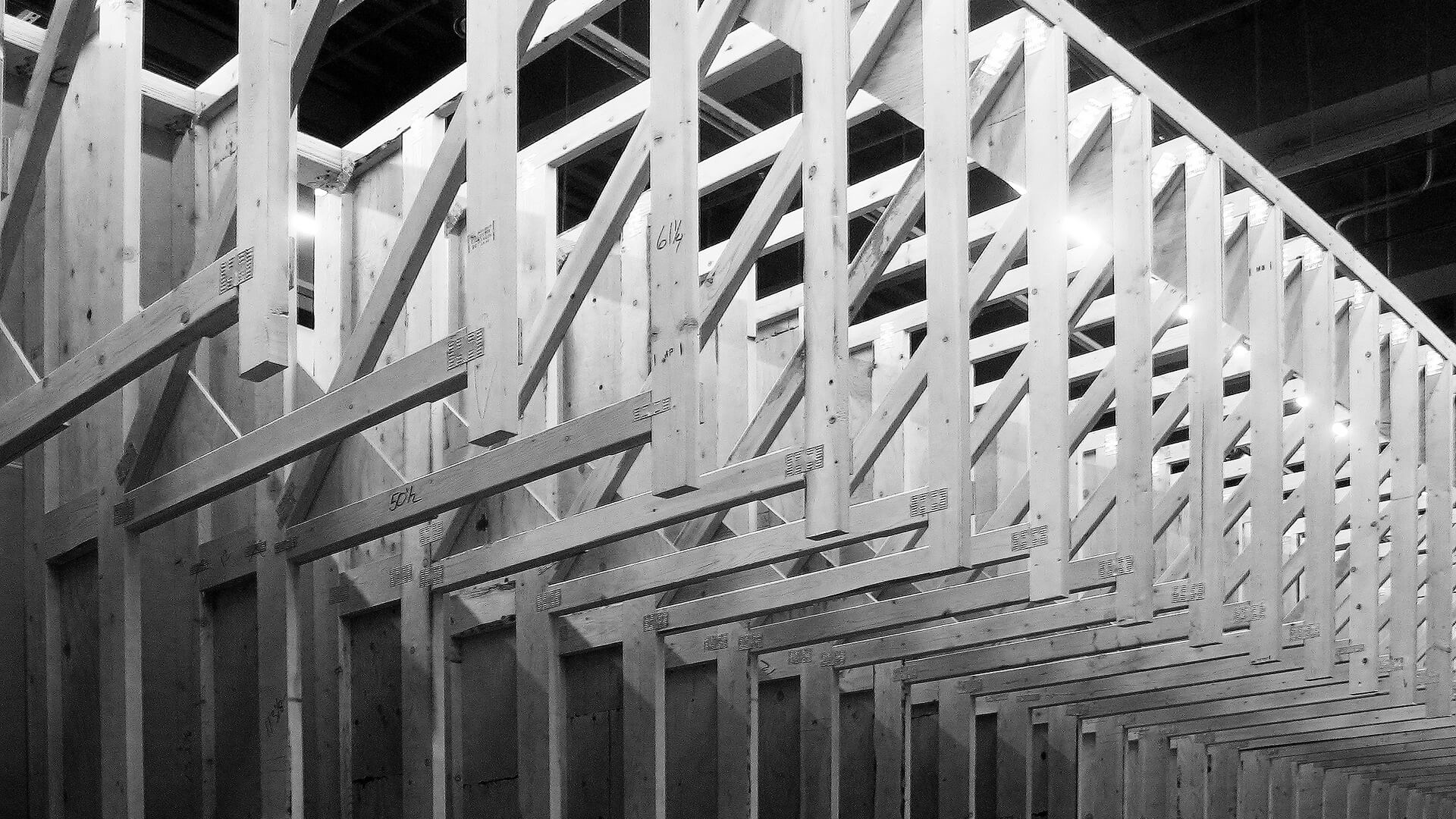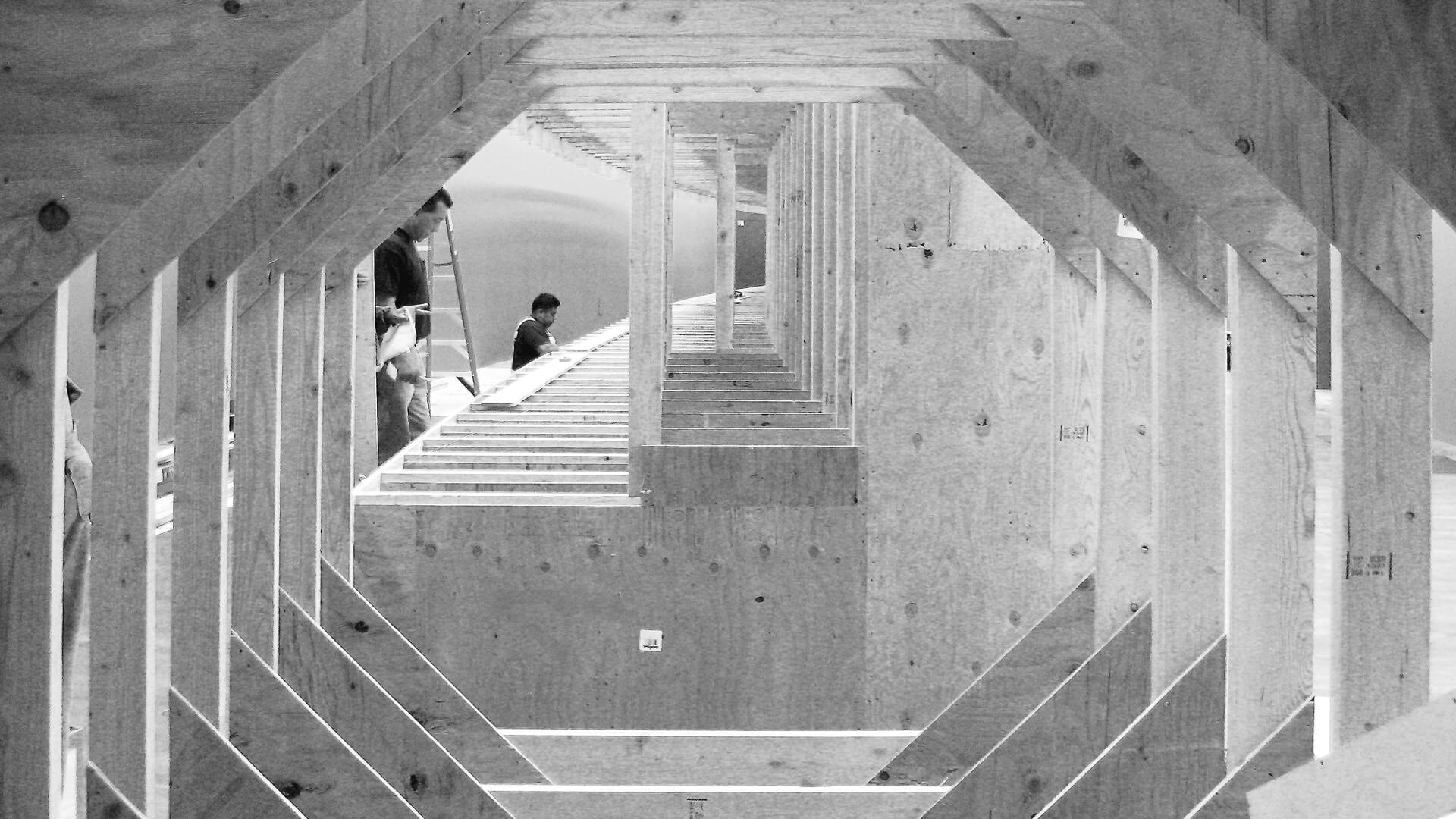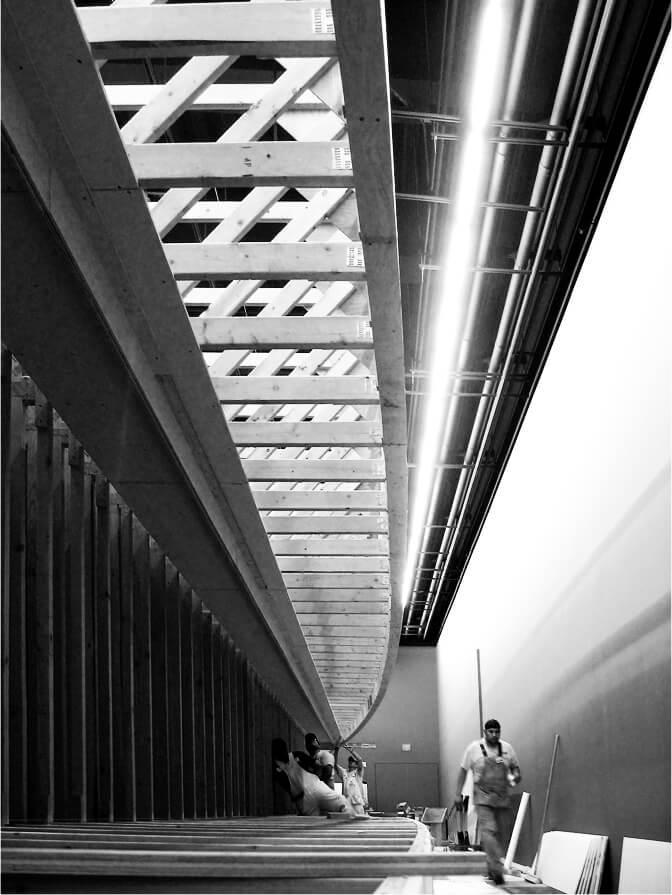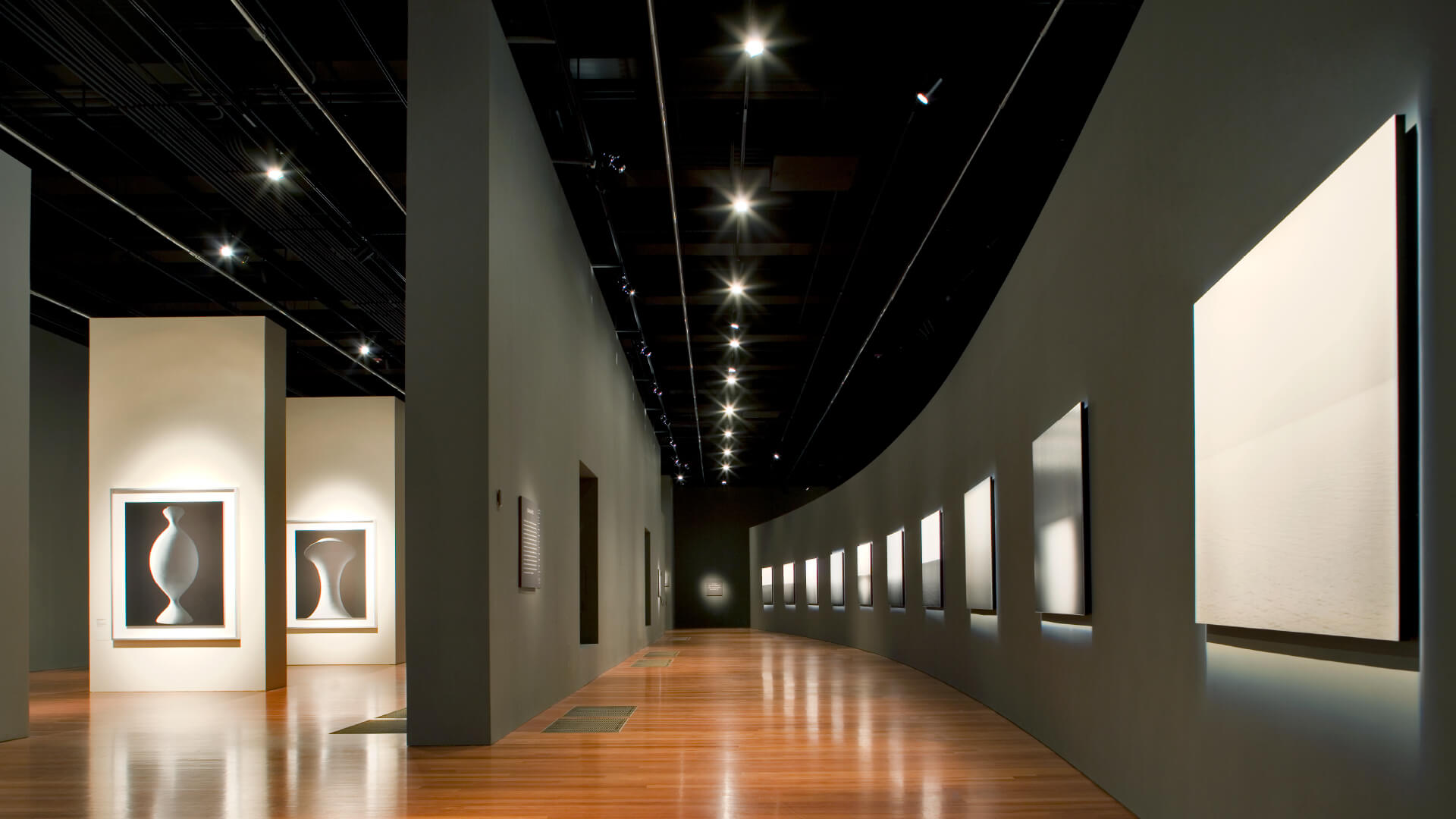
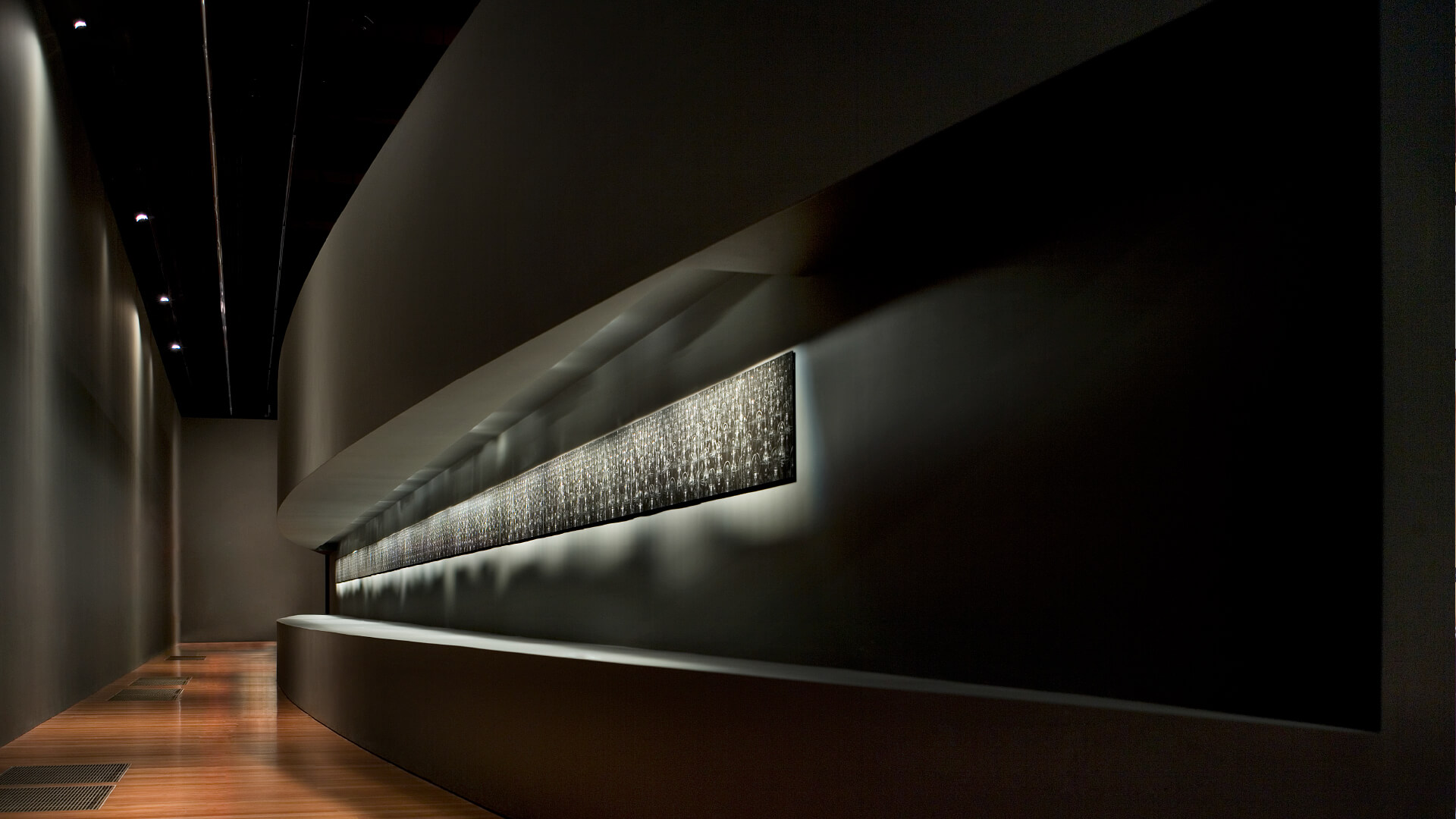
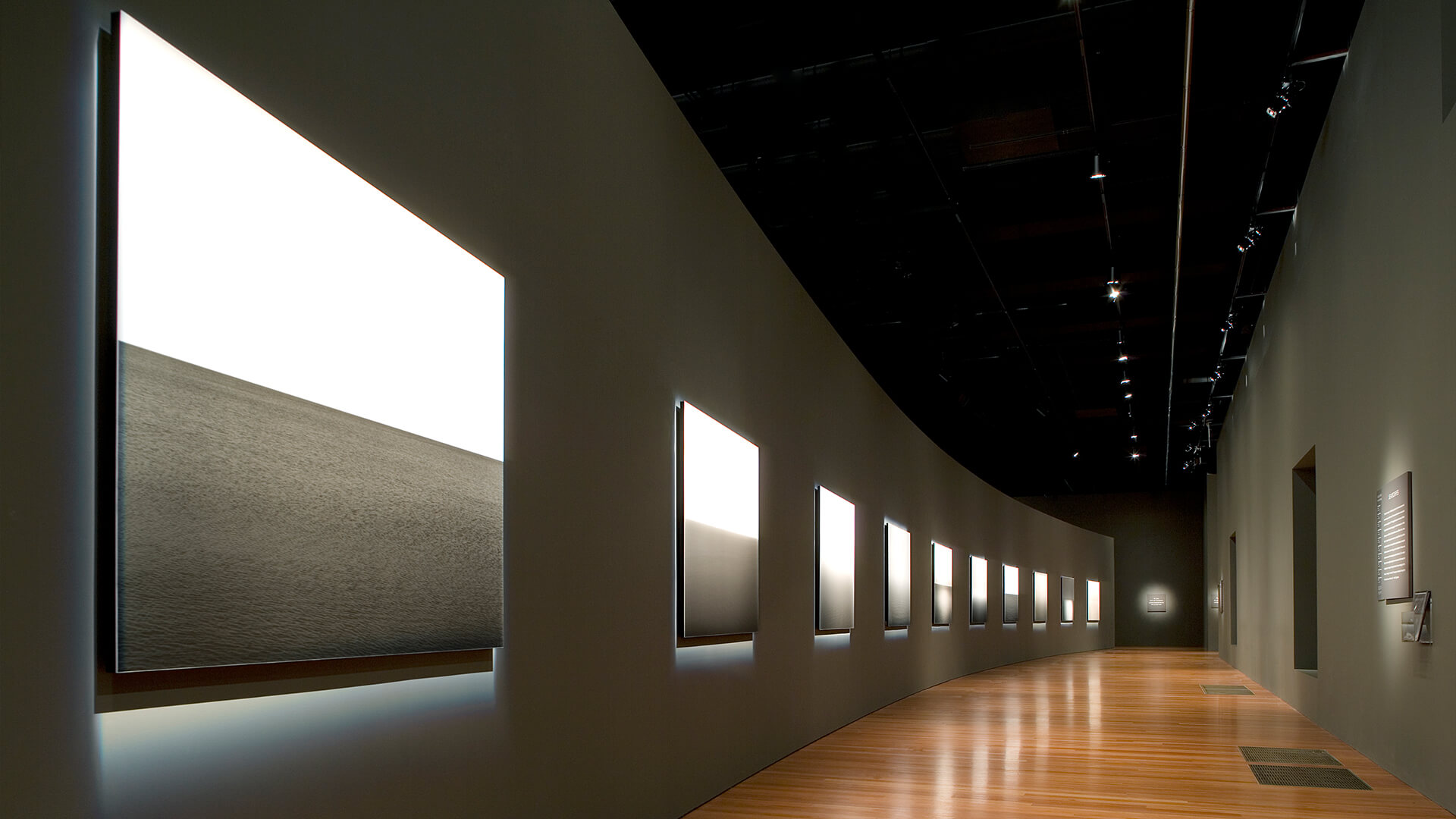
Hiroshi Sugimoto Exhibition at the deYoung Museum
Status
Client
Scope
Design
Project Team
Mark Cavagnero
Ian Young
Koji Tsutsui
Description
Mark Cavagnero Associates was honored to be invited to work with the renowned Japanese-photographer, Hiroshi Sugimoto, and the de Young Museum’s exhibition department in designing a defining element of the artist’s recent retrospective. The structure, a 120-foot-long curved wall upon which selections from Mr. Sugimoto’s Seascape series would be displayed, was conceived of at the Hirshhorn Museum in Washington D.C. where the enigmatic photos were first displayed in concave formation on the gallery’s curved walls. Mr. Sugimoto was so pleased with the installation that he desired a similar form for his exhibition at the de Young.
The idea faced several challenges in San Francisco due to the city’s seismic safety regulations and the museum’s requirement that the structure be freestanding. Working with the structural engineer and the direction of the artist himself, the team designed a form of gentle curves and varied depths that Mr. Sugimoto desired. Mr. Sugimoto’s Seascapes expanded along the outer edge of the curve while his Sea of Buddha ran along a recessed channel within the convex side of the curve. The wall was painted a rich, dark grey that receded into the darkness within the exhibition space, while the artworks, carefully lit with custom fixtures that matched the works proportions, seemed to hover in formation.
As a freestanding object within the gallery, the wall became more than a backdrop for art: Taking cues from the masterpieces it supported, the wall engaged the viewer with subtle orchestrations of movement and space. As the viewer moved through the dimly lit gallery, their experience transformed from one side of the wall where only the artwork was starkly illuminated, to the other convex side where the artwork was draped with an intriguing soft glow.
In order to meet the needs of the museum, construction of the wall was carefully detailed so that the installation could be quickly assembled and efficiently dismantled after the exhibition was over.
Location
Recognition
Awards
Contract Magazine, Interiors Award, 2009
AIA San Francisco, Excellence in Design Award, 2009
IIDA Northern California Chapter, Merit Award, 2009
Publications
Architectural Record, Feb 2008
Contract, January 2009
California Home + Design, Apr 2009
The Registry, April 2009
